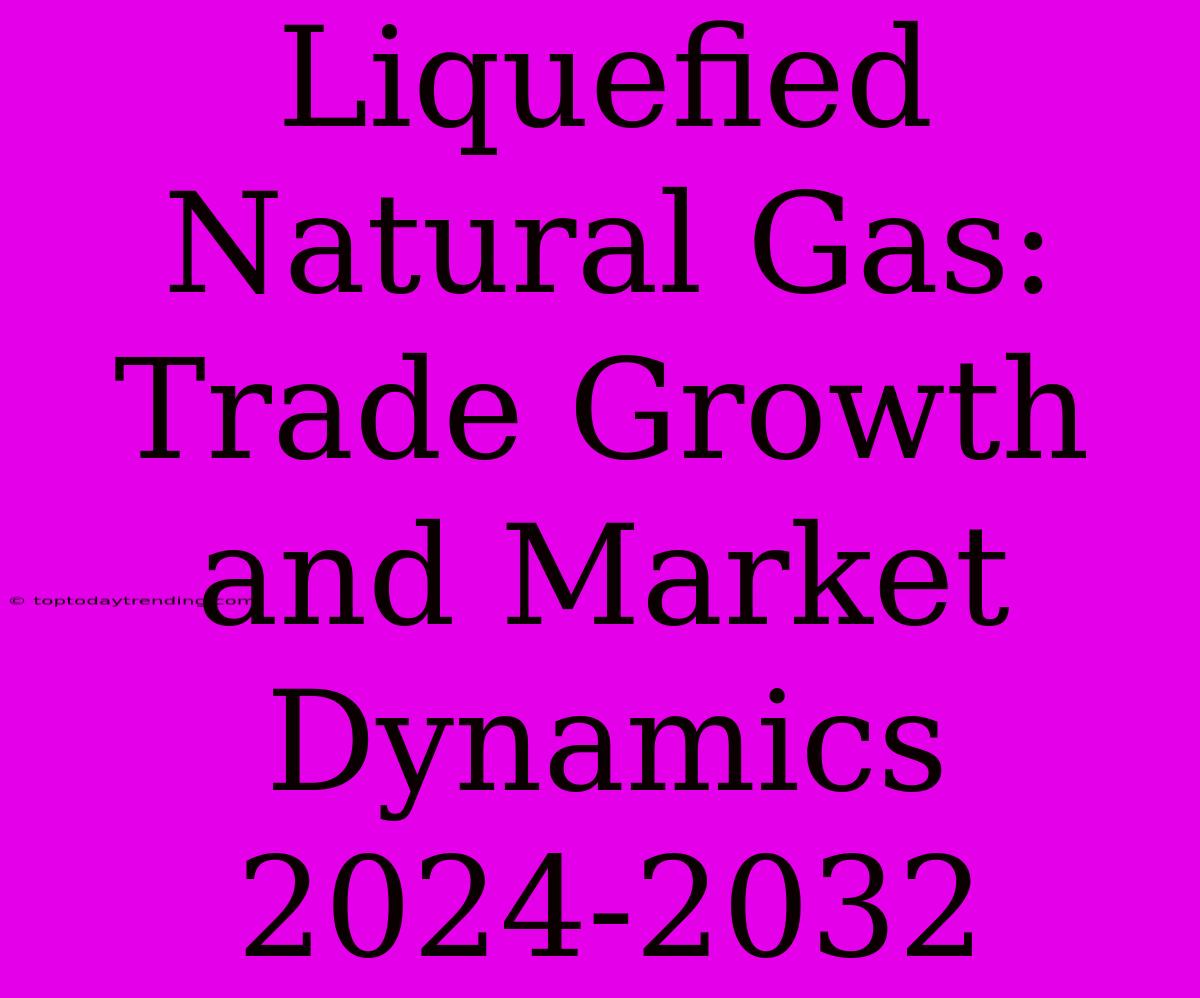Liquefied Natural Gas: Trade Growth and Market Dynamics 2024-2032
Introduction
Liquefied Natural Gas (LNG) has become a crucial component of the global energy landscape, playing a significant role in meeting the world's increasing energy demands while also contributing to a cleaner energy future. This article explores the current state of the LNG trade, delves into the key drivers behind its growth, and analyzes market dynamics that will shape the industry in the coming years.
LNG Trade Growth: A Booming Market
The LNG market has experienced remarkable growth in recent years, and this trend is expected to continue into the future. According to the International Energy Agency (IEA), global LNG trade reached a record high of 500 million tonnes in 2023 and is projected to grow significantly by 2032.
Key Drivers of LNG Trade Growth:
- Growing Energy Demand: The world's energy demands are rising steadily, driven by factors such as population growth, urbanization, and industrial development. LNG offers a cleaner and more efficient alternative to traditional fossil fuels, making it an attractive option for countries seeking to meet their energy needs.
- Transition to Cleaner Energy: The transition to a low-carbon future has led to a decline in coal consumption and a shift towards natural gas, which emits significantly fewer greenhouse gases than coal. LNG plays a key role in facilitating this transition by offering a cleaner and more flexible alternative to piped natural gas.
- Supply Diversification: Many countries are diversifying their energy sources to reduce reliance on a single supplier. LNG, with its global supply chains, offers countries the flexibility to import natural gas from multiple sources, ensuring energy security.
Market Dynamics Shaping the LNG Industry:
- New Supply Sources: The development of new LNG production projects in countries like the United States, Australia, and Qatar is adding significant volumes to the global market, increasing supply and potentially lowering prices.
- Technological Advancements: Innovation in LNG technologies, such as the development of smaller-scale LNG plants and the optimization of liquefaction processes, is making LNG more accessible to a wider range of markets.
- Policy and Regulations: Governments worldwide are implementing policies to encourage the use of natural gas and LNG. These include tax incentives, subsidies, and regulations promoting cleaner energy sources.
- Competition from Renewable Energy: The rapid growth of renewable energy sources, such as solar and wind power, poses a potential challenge to LNG's growth. However, LNG can complement renewable energy sources by providing a reliable and dispatchable energy source.
Challenges Facing the LNG Industry:
- Infrastructure Investment: Significant investments are needed to build new LNG terminals, pipelines, and storage facilities to handle the increasing volumes of LNG trade.
- Environmental Concerns: LNG production and transportation have environmental impacts, including greenhouse gas emissions and potential for spills.
- Geopolitical Risks: The global LNG market is subject to geopolitical risks, such as political instability, trade disputes, and potential disruptions to supply chains.
Opportunities for the Future:
- Growth in Emerging Markets: The increasing demand for energy in emerging markets such as Asia and Africa presents significant opportunities for LNG growth.
- Integration with Renewable Energy: Combining LNG with renewable energy sources can create a more reliable and flexible energy system.
- Technological Advancements: Further advancements in LNG technologies, such as the development of carbon capture and storage technologies, can help mitigate environmental concerns.
Conclusion
The LNG market is expected to continue growing in the coming years, driven by strong global energy demand, the transition to a cleaner energy future, and ongoing technological advancements. While challenges remain, the opportunities for growth in the LNG sector are significant, particularly in emerging markets and in the integration of LNG with renewable energy sources. The future of the LNG industry is promising, as it plays a vital role in shaping a more sustainable and energy-secure world.
Note: This article is for informational purposes only and should not be considered as financial or investment advice.

